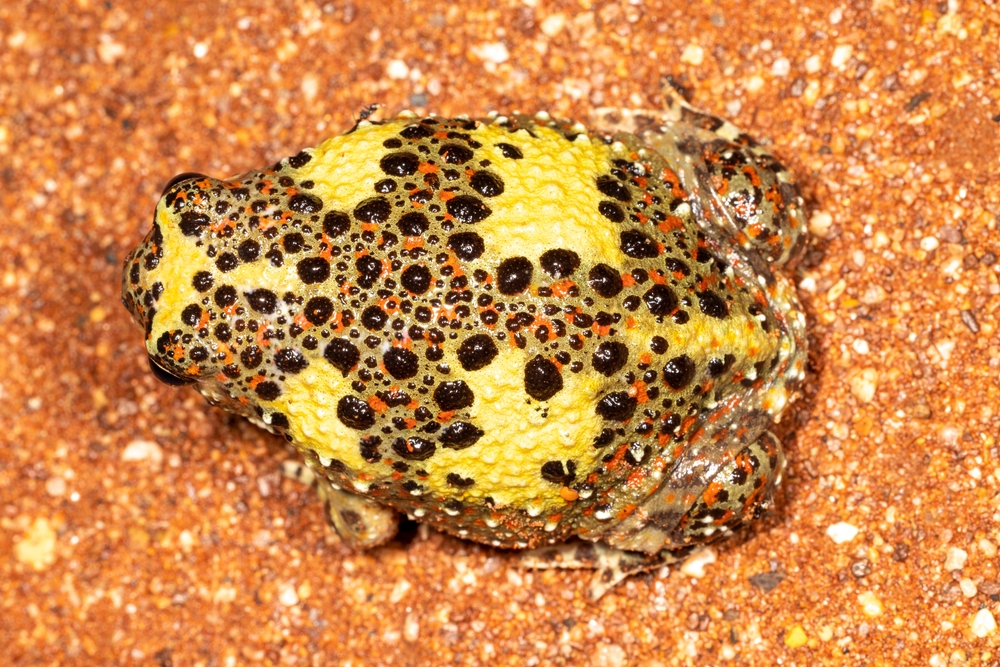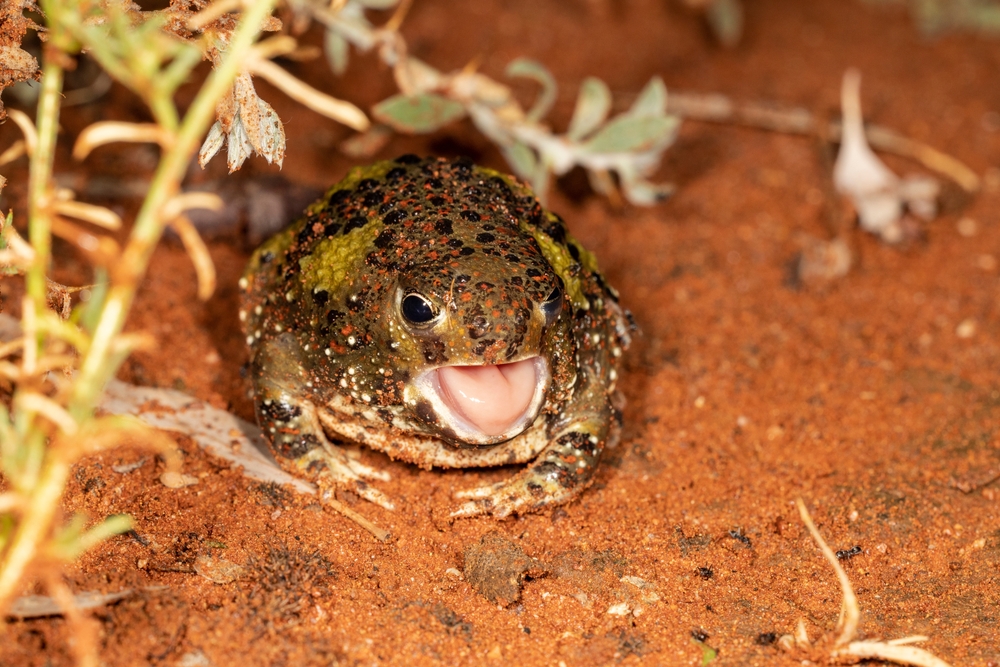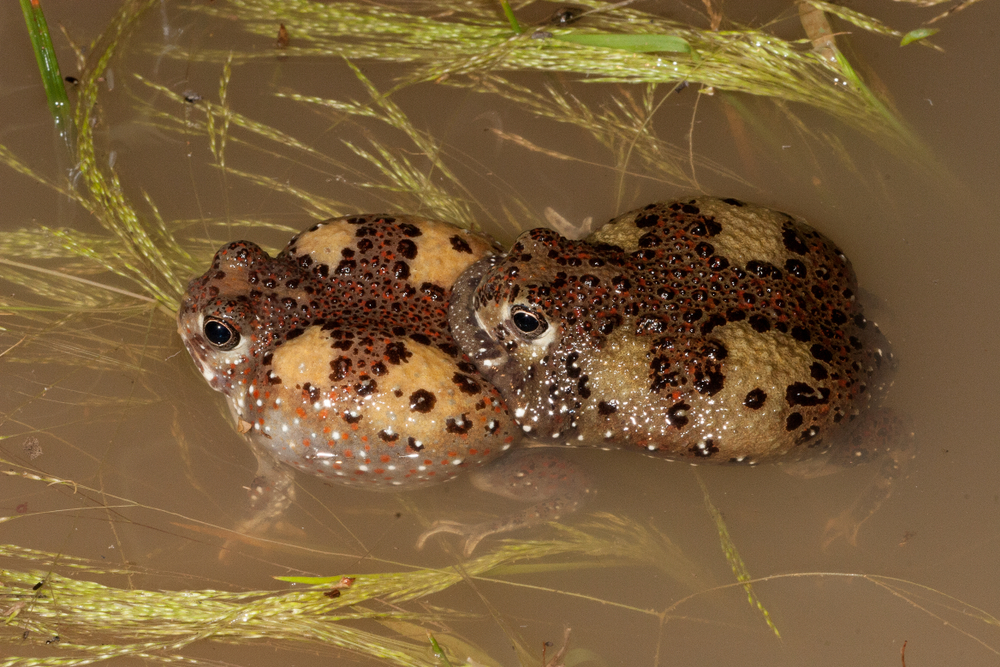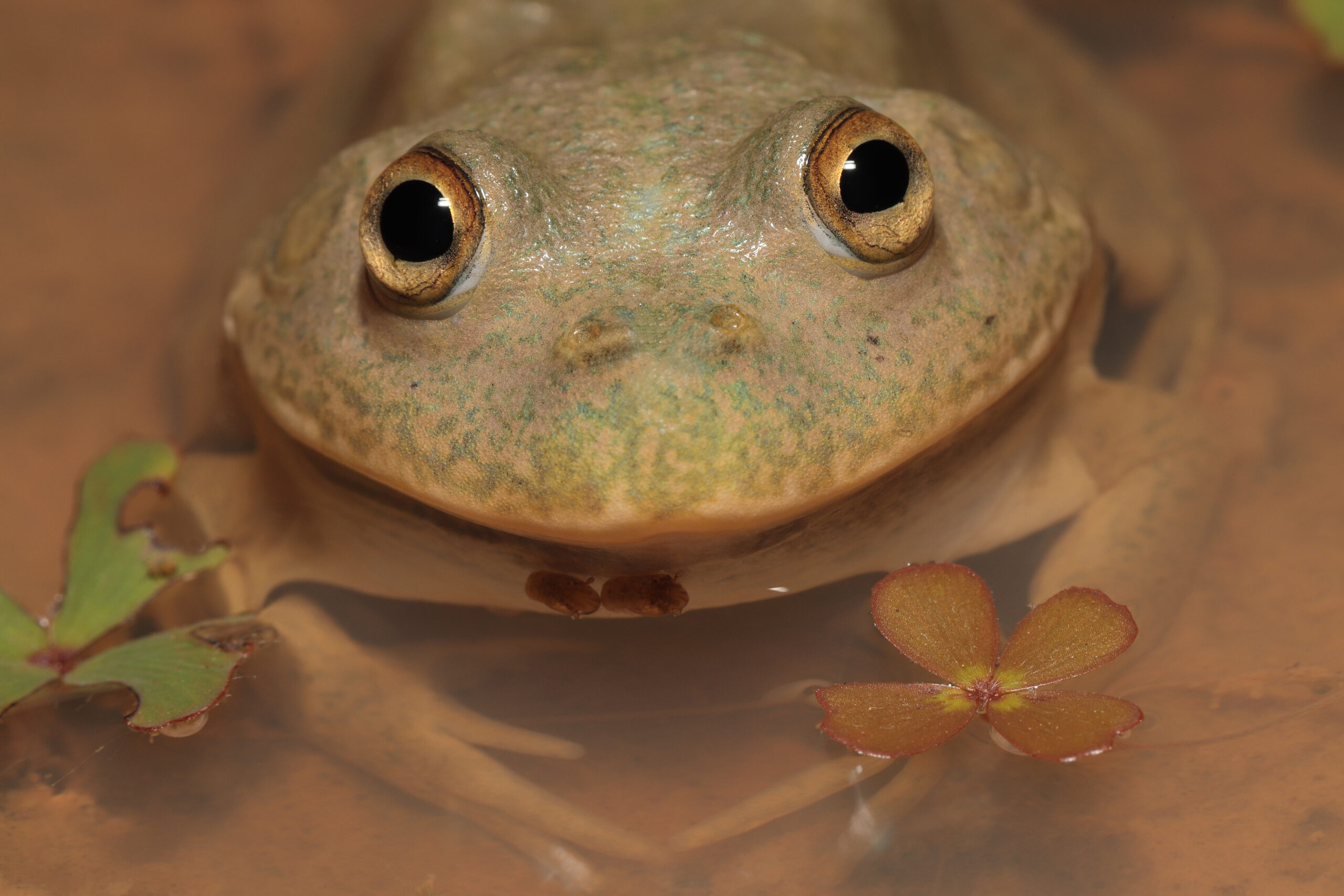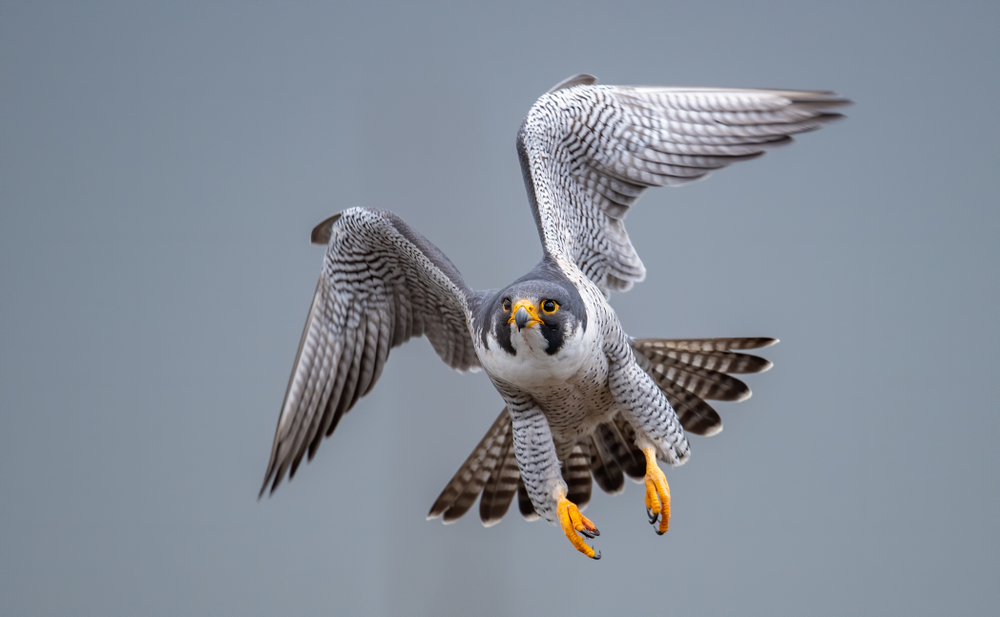| Common name | Crucifix frog |
| Scientific name | Notaden bennettii |
| Type | Frog |
| Diet | Insectivorous, eating insects, tadpoles, and mosquito larvae |
| Average lifespan | 6 to 8 weeks above ground |
| Size | Between 4.5 and 6.5cm long |
Named after the distinct cross-like pattern on its back, the crucifix frog or holy cross frog, is a ground dwelling burrower that only comes to the surface after a good rain. One of the more unique species of amphibians within Australia, this tiny frog is about the same size as a twenty-cent piece and spends most of its life underground.
The crucifix frog has a cross shape pattern made from bright red and black dots that adorns its brightly coloured yellow or yellowy green back. With a white underbelly, the male crucifix frog is recognisable thanks to its brown throat. The crucifix frog has a gold iris with a pupil that is horizontal and almost round. Easily mistaken for a intensely coloured, lumpy bouncy ball, the crucifix frog is one of the few Australian frog species that utilises aposematism or the use of brightly coloured patterning to repel its predators.
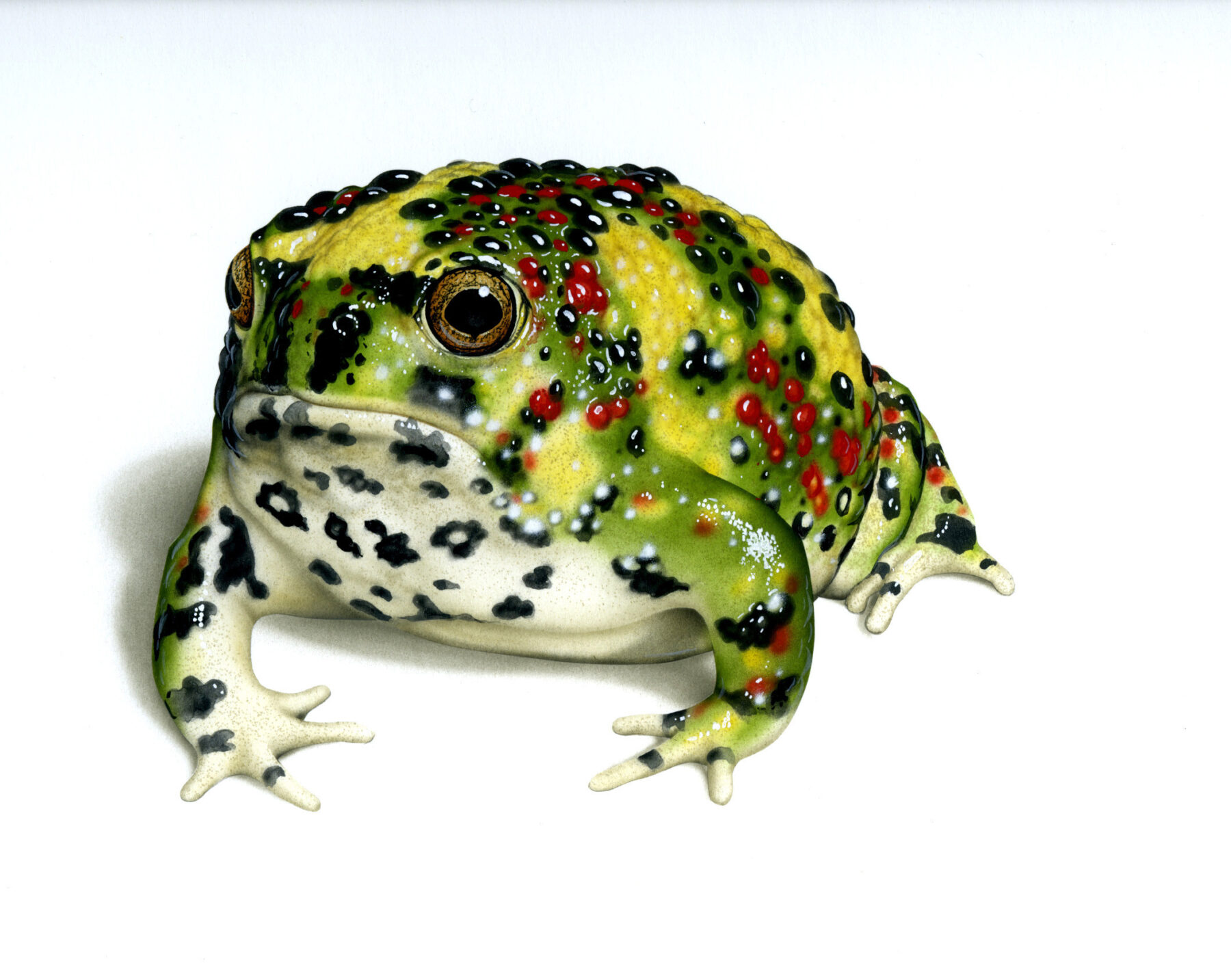
Found throughout inland New South Wales, west of the ranges and in south-west Queensland, these tiny frogs make their homes in semi-arid grasslands and black soil plains which are rich in clay. The crucifix frog lives most of its life in underground burrows, two to three metres below the surface. When underground, the frog keeps moist by creating a protective cocoon around itself, covering everything except for its nostrils. This barrier is made from layers and layers of skin which prevent the frog from drying out. The cocoon eventually becomes a nutrient-dense meal for the crucifix frog when it devours it before making the journey above ground.
As heavy rains trickle down into the soil, the crucifix frog uses the spades on its small feet to dig towards the surface. The sight of hundreds of brightly coloured mini frogs emerging from the underground to breed, and feed is one of nature’s true delights. Once earth side, the crucifix frog makes its temporary home within puddles, ponds, and flooded areas and wastes none of its short six to eight weeks of life above ground by breeding.
Spring to autumn during times of heavy downpour is the prime breeding season for the crucifix frog. Cooper coloured tadpoles emerge out of eggs that are laid as a cluster at the surface of the water pools. Tadpoles grow to around 5cm in length and gravitate towards the bottom of the water source until they develop into a frog after around six weeks.
Filling their stomachs is also a priority for the crucifix frog once it emerges from its underground state of hibernation. These miniature frogs’ snack on insects, mosquito larvae and tadpoles that are readily found in temporary pooling water. An unusual hunting technique used by the crucifix frog to successfully nab a meal is known as ‘pedal luring.’ This adaption sees the frog remain completely still body, except for its wriggling toes which helps to attract unsuspecting insects.
Crucifix frogs have a sticky reaction to being disturbed by humans or predators, as they release a milky substance known as frog glue from the glands in their skin. Thought to keep would-be predators away, this unique, distasteful, sticky secretion also works to trap a potential meal. Insects that get too close to the sticky frog, become attached to its skin and when the crucifix frog sheds its outer layer, it eats the glue, and the entrapped insects become a bonus snack!

